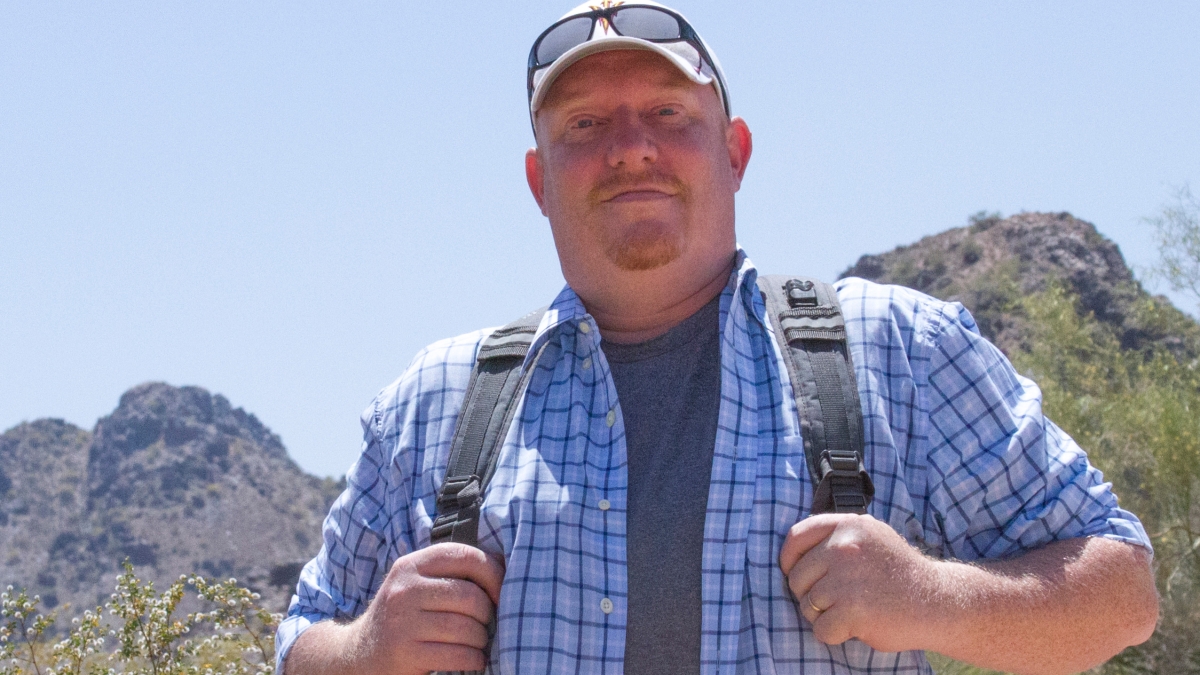Grad finds passion for geography and earth sciences

Asked what especially interests him about geography, Jason Edmunds hones in on the concept of studying place and time.
“Whether the topic is land use, demographics, or geomorphology, being able to observe, measure and analyze how phenomena in the world are distributed – and also how they change over time – is exciting and empowering,” Edmunds said.
He found this passion for geography after a life trajectory that led him from high school straight into the workforce, and after some years' success in the high-tech industry, with positions as a project manager, technical editor and consultant.
However, the birth of his son in 2006, led him to reflect on education and the model he would set. After almost 13 years in high-tech, he was ready for a change. In 2010, Edmunds entered Arizona State University, with a major in geology.
As he began taking geography classes, he gravitated towards the second field, and this month will earn degrees in both geography and the geologic focus of earth and environmental sciences, as well as a certificate in Geographic Information Science (GIS). He is the first in his family to graduate from college.
“At ASU, Jason has impressed all of his professors with his preparation, precision in questions and asking for assistance, his efficiency and thorough approach to assignments, and his passion for learning,” said ASU geography professor Ron Dorn.
With his interests focusing on physical geography and geographic information science, Edmunds was invited to serve as a preceptor for the school’s introductory physical geography course. Preceptors are top-level undergraduates who support the learning of students in the class, giving them one-on-one mentoring and tutoring. His training in geomorphology led to a synergism with the climatology expertise of the graduate student teaching assistants. Result: the GPH 111 students got a great experience.
By the time Edmunds took the required geographic research methods course this semester, he had developed a passion for research, too. Dorn, who taught the course, offered students the option to carry out a research project as if they intended to publish it – and Edmunds took up the challenge.
His topic focused on a landform in the eastern half of the South Mountain Preserve in Phoenix: an area where disk-shaped rocks litter the slopes. Edmunds tested the idea that these disks are scale invariant – in that they maintain the same basic dimensions regardless of their size.
This project evolved into research on a type of granite landform that has not been discussed in the scholarly literature and includes electron microscope analyses of how the disks form. This research will be submitted to the prestigious Earth Surface Processes and Landforms, a publication of the British Geomorphological Research Society.
Having completed a milestone of his own education, as soon as graduation ceremonies end, Edmunds will begin working with Dorn to create update and revise geography course content here at ASU, specifically as it relates to landform processes, to better fit current students’ learning styles.
“Long-term, I plan to pursue a PhD in geography," he says. "While completing the South Mountain research project, I realized – when it's not driving me mad – I absolutely love research. The process of identifying, studying and (hopefully) explaining a mysterious attribute of the world is invigorating. I look forward to diving in deeper.”